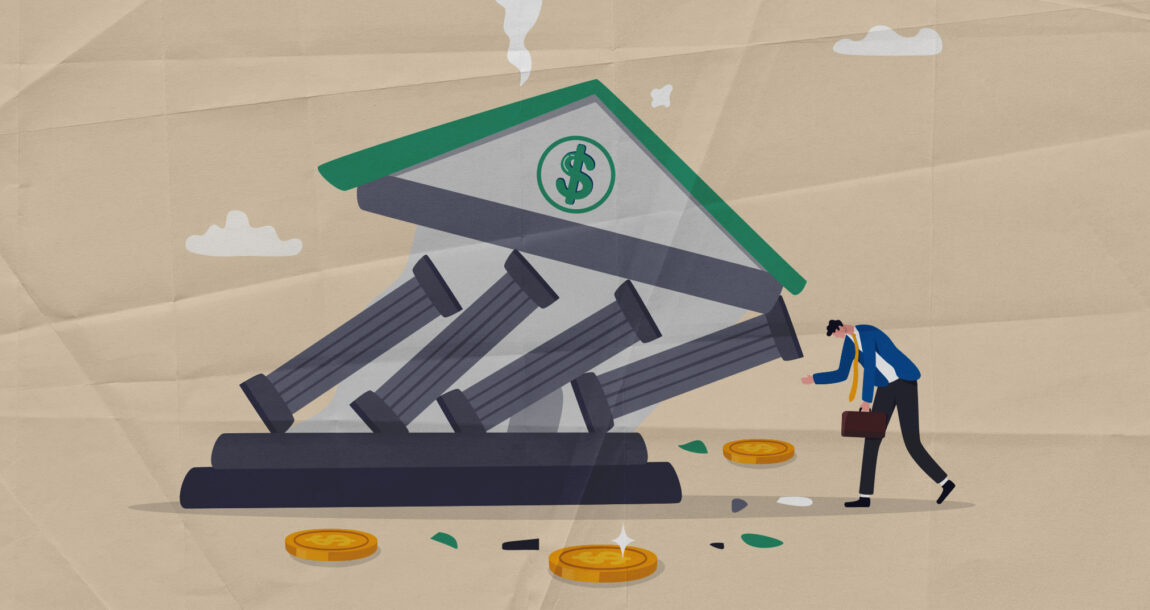Investors, regulators, legislators anxious as banking system faces another shaky week

As First Citizens takes control of most of Silicon Valley Bank’s assets and obligations, the industry, investors, regulators and politicians are watching this week to see if the banking system’s dikes will hold.
After two weeks of shopping SVB around, the Federal Deposit Insurance Corp. got First Citizens Bancshares to take SVB’s banks, loans and branches. First Citizens of Raleigh, N.C., was the 30th-largest bank in the United States before the deal. Stocks for regional banks jumped when the market opened.
Legislators will be getting into the act this week as the Senate Banking and the House Financial Services committees will be hearing from Federal Reserve Vice Chair for Supervision Michael Barr, FDIC Chair Martin Gruenberg and Treasury Under Secretary for Domestic Finance Nellie Liang in sessions on Tuesday and Wednesday. They likely will face questions over supervision of SVB, but deposit insurance, bank supervision and capital requirements are expected to be on the broader agenda.
Banking system supports a key concern
A key concern is the Fed’s new emergency borrowing program and support system for struggling banks. Big banks have been injecting $30 billion in deposits into First Republic of San Francisco to stop the threat of a financial wildfire in the Bay Area and beyond.
Meanwhile in Europe, Credit Suisse found a suitor in rival UBS to take over its assets and liabilities while anxiety built around Deutsche Bank, which has had its share of scandals, including allegations of tax fraud and money laundering. That bank’s precipitating problem, as with most banks, is its holdings in longer-duration bonds.
Every financial crisis has the weak link that broke, or hobbled, the system. This one was long-term bonds, which have been depreciated by higher Fed rates. SVB held 10-year and longer bonds despite the warnings that the Fed would be raising rates, but it turns out many institutions are holding piles of these depreciating assets.
Although the Fed has already blasted the rate from near zero to nearly 5% in a year, choking off the housing market and destabilizing the bond market, the central bank cranked up the rate another quarter percentage point last week to its highest level since September 2007.
Fed Chair Jerome Powell during the central bank’s meeting last week said he remained confident in the banking system.
“I guess our view is that the banking system is sound and it’s resilient; it’s got strong capital and liquidity,” Powell said. “Deposit flows in the banking system have stabilized over the last week. And the last thing I’ll say is that we’ve undertaken — we’re undertaking a thorough internal review that will identify where we can strengthen supervision and regulation.”
The Fed considered pause, says Powell
The Fed did consider pausing the rate increase, Powell said, but the board unanimously approved an increase because inflation and labor market data was stronger than expected. In fact, before the recent crisis, the Fed was looking at raising rates more than they expected over the year to drive down inflation.
“We are committed to restoring price stability, and all of the evidence says that the public has confidence that we will do so—that we will bring inflation down to 2% over time,” Powell said after the Fed meeting. “It is important that we sustain that confidence with our actions as well as our words.”
Powell did hint that the Fed might not be as strident in raising rates this year. One of the effects of the turmoil of the past two weeks is credit tightening, which is actually good news for the Fed.
“In principle, as a matter of fact, you can think of it as being the equivalent of a rate hike or perhaps more than that,” Powell said. “Going forward, as I mentioned, in assessing the need for further hikes we’ll be focused, as always, on the incoming data and the evolving outlook, and in particular on our assessment of the actual and expect effects of credit tightening.”
Steven A. Morelli is a contributing editor for InsuranceNewsNet. He has more than 25 years of experience as a reporter and editor for newspapers and magazines. He was also vice president of communications for an insurance agents’ association. Steve can be reached at [email protected].
© Entire contents copyright 2023 by InsuranceNewsNet. All rights reserved. No part of this article may be reprinted without the expressed written consent from InsuranceNewsNet.
Steven A. Morelli is a contributing editor for InsuranceNewsNet. He has more than 25 years of experience as a reporter and editor for newspapers and magazines. He was also vice president of communications for an insurance agents’ association. Steve can be reached at [email protected].






State insurance regulators pursue more data on industry use of AI
Commentary: Why Monte Carlo simulations can sell retirement investors short
Advisor News
- Most Americans optimistic about a financial ‘resolution rebound’ in 2026
- Mitigating recession-based client anxiety
- Terri Kallsen begins board chair role at CFP Board
- Advisors underestimate demand for steady, guaranteed income, survey shows
- D.C. Digest: 'One Big Beautiful Bill' rebranded 'Working Families Tax Cut'
More Advisor NewsAnnuity News
- MetLife Declares First Quarter 2026 Common Stock Dividend
- Using annuities as a legacy tool: The ROP feature
- Jackson Financial Inc. and TPG Inc. Announce Long-Term Strategic Partnership
- An Application for the Trademark “EMPOWER PERSONAL WEALTH” Has Been Filed by Great-West Life & Annuity Insurance Company: Great-West Life & Annuity Insurance Company
- Talcott Financial Group Launches Three New Fixed Annuity Products to Meet Growing Retail Demand for Secure Retirement Income
More Annuity NewsHealth/Employee Benefits News
- NM fills gap after Congress lets ACA tax credits expire
- Congress takes up health care again − and impatient voters shouldn’t hold their breath for a cure
- On the hook for uninsured residents, counties now wonder how to pay
- Bipartisan Senate panel preparing ACA subsidies bill
- CT may extend health insurance sign-up amid uncertainty over future of ACA subsidies, Lamont says
More Health/Employee Benefits NewsLife Insurance News